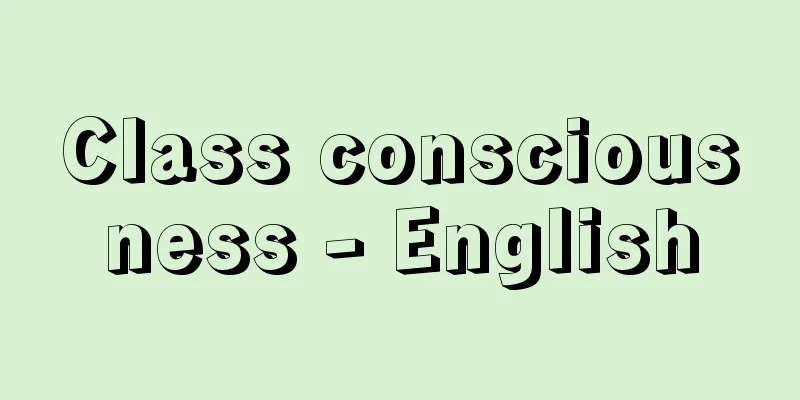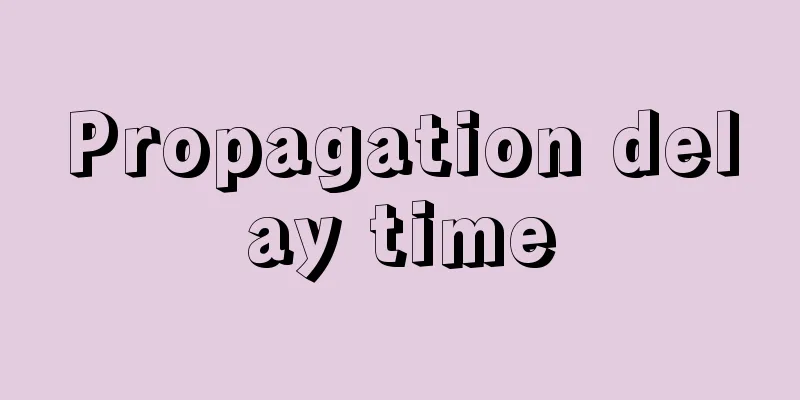Class consciousness - English

|
It refers to the psychology or consciousness that arises from belonging to the same class and sharing a common class subculture (the way of living, acting, and thinking that is specific to that class) under roughly the same class circumstances, and that reflects the interests of that class to some extent. At its deepest level, class psychology is formed as a spontaneous, everyday consciousness of life, but on top of that, a relatively consistent and systematic framework of value judgments, worldview, or ideology forms the surface. The former is called experiential class consciousness and the latter essential class consciousness, but class consciousness in the broad sense includes both, while class consciousness in the narrow sense usually refers to the latter. Furthermore, class psychology corresponds to class in an unconscious and latent state (class in itself), while class consciousness corresponds to class in a conscious and manifest stage (class for itself), but the two are not necessarily distinct in terms of stages of development; in reality they exist simultaneously, intersecting and permeating each other in complex and subtle ways, forming real class consciousness. [Akira Hamashima] The structure of class consciousnessThus, the internal structure of class consciousness has class psychology at its deep layer and class ideology at its surface layer. Class psychology is the totality of everyday, spontaneous, and irrational emotions, moods, desires, fantasies, and fragmentary thoughts that are common among class members. Such as vague feelings of belonging and affinity, and feelings of discrimination against others (feelings of inferiority toward those above, feelings of superiority toward those below), "class psychology does not necessarily coincide with the material interests of the class, but it always arises from the living conditions of the class and is always determined by them" (Bukharin). In this sense, class psychology is not a consciousness that rationally adapts to objective class conditions and class interests, but rather an underlying irrational sensory recognition, and does not form a consistent and coherent system in itself. It is something that exists only in the dimension of sensory and natural growth, and settles as an everyday life consciousness that is entangled with old consciousness and traditional value systems, and is inseparably linked to fundamental patterns of behavior and lifestyles such as customs and practices. In contrast, class consciousness in the narrow sense is nothing other than class ideology, and is characterized by rational recognition and purposefulness as a consciousness that is rationally adapted to objective class conditions and class interests. It is therefore a consistent and systematic framework for recognition and judgment, providing an intellectual elucidation of the mechanisms of class society and their results, and a perspective for overcoming contradictions, and functions as a guide for practice or a basis for defining activities, and as a powerful ideological weapon in class struggle. It includes a sense of common interest within the same class (a sense of conflict of interest with other classes), the accompanying sharp sense of solidarity, an awareness of the historical and social position and mission of one's class, a desire to seek liberation from the current situation, awareness and vision of future goals, and an awareness of the means and methods (tactics and strategies) for achieving these goals. According to Lukács, this kind of class consciousness is "a rationally adapted reaction to certain typical conditions in the production process," "the conscious meaning of the historical state of the class," and is nothing other than a consciousness or ideology that is logically considered to correspond to class existence, independent of "factual, psychological states of consciousness" (i.e., not mediated by human psychology). The rise of class consciousness is only possible through collective action to obtain these demands, using the daily demands (close to class psychology) that arise from people's class-defined lives as an energy source. Class identification, proposed by the American social psychologist Richard Centers (1912-81), is a type of communal feeling or sense of similarity, and is a subjective awareness of which class one belongs to.It goes without saying that there is a close relationship between people's class status, their political and economic attitudes, and their class identification. [Akira Hamashima] Trends in class consciousnessHistorically, the formation of class consciousness was first observed among the bourgeoisie, who overthrew the feudal system and realised modern civil society. It advocated liberty, equality and fraternity, demanded to be part of society while being a whole, and called for the liberation of man from status slavery. Civil consciousness, the Protestant ethic, materialistic rationalism and Enlightenment are various manifestations of this, but the freedom they advocated suppressed and denied equality and fraternity, and gave rise to the class consciousness of the proletariat, which aimed for the total liberation of humanity. This class consciousness was to be "the last class consciousness in the history of mankind" (Lukacs), precisely because it was impossible to liberate oneself as a class without the abolition of class society. However, although the subsequent social development did not bring about any fundamental change in class relations themselves, the rise in living standards due to increased labor productivity, the correction of income disparities through the expansion of welfare policies, the collapse of class-specific internal environments (subclass cultures) due to the standardization of lifestyles, the forced standardization within huge organizations and the total domination of technological rationality, the manipulation of public opinion through mass communication, and other factors in the progress of mass and controlled social conditions have made the contradictions and conflicts between classes unclear, leading to the fading of classical proletarian class consciousness and the spread of false consciousness. The phenomenon of the penetration of so-called middle-class consciousness speaks volumes about the state of mind of the modern era. [Akira Hamashima] [Reference item] | |Source: Shogakukan Encyclopedia Nipponica About Encyclopedia Nipponica Information | Legend |
|
同一の階級に所属し、ほぼ同じ階級状況のもとで共通の階級下位文化(その階級特有の生活や行動の仕方、ものの考え方)を分かち持つところから生じ、なにほどかその階級利害を反映する心理ないしは意識をいう。その深層部分には、自然発生的で日常的な生活意識としての階級心理が形成されるが、そのうえにある程度首尾一貫し体系だった価値判断の枠組みや世界観ないしはイデオロギーが表層をなしている。前者を経験的階級意識、後者を本質的階級意識とよんで区別するが、広義の階級意識は両者を含み、狭義のそれは後者をさすのが普通である。なお、階級心理は無自覚で潜在的な状態にある階級(即自的階級Klasse an sich)に対応し、階級意識は自覚的で顕在的な段階にある階級(対自的階級Klasse für sich)に対応するが、両者はかならずしも発展段階的に区別されるものではなく、現実には同時に存在し、複雑微妙に交錯し浸透しあって、現実の階級意識を形づくっている。 [濱嶋 朗] 階級意識の構造このように階級意識の内部構造は、階級心理を深層とし階級イデオロギーを表層とするが、階級心理とは、階級所属員の間に共通してみられる日常的、自然発生的、非合理的な感情、気分、願望、幻想、断片的思想などの総体をいう。おぼろげな共属意識や親和感情、他に対する差別感情(上への劣等感、下への優越感)などのように、「階級心理はこの階級の物質的利害にかならずしも一致するものではないが、それはつねに階級の生活条件から生じ、つねにこれによって規定される」(ブハーリン)。この意味での階級心理は、客観的な階級状況や階級利害に合理的に適合した意識ではなくて、むしろその基底にある非合理的な感性認識なのであり、それ自体首尾一貫した整合的な体系をなすものではない。それはあくまでも感性的、自然成長的な次元のもので、旧意識や伝統的価値体系の絡みついた日常的な生活意識として沈殿し、習俗や慣習などの基層的な行為様式や生活様式と不可分に結び付いている。 これに対して、狭義の階級意識は階級イデオロギーにほかならず、客観的な階級状況や階級利害に合理的に適合した意識として、理性的認識と目的意識性によって特徴づけられる。したがってそれは、首尾一貫性と体系性をもった認識と判断の準拠枠であり、階級社会のメカニズムやその結果に対する知的解明と矛盾克服への展望を提供し、実践の指針または活動の規定根拠として、階級闘争における有力な思想的武器として働く。同一階級内部における利害共同意識(他の階級に対する利害対立意識)、それに伴う先鋭な連帯意識、自己の所属する階級の歴史的、社会的な位置と使命についての認識、現状からの解放を求める志向と将来の目標に対する自覚と展望、この目標を達成するための手段と方法(戦術と戦略)の認識などが、そこに含まれる。ルカーチによると、この種の階級意識は「生産過程における一定の典型的状態に向けられた、合理的に適合した反応」であり、「階級の歴史的状態の意識的となった意味」であって、「事実的、心理学的な意識状態」とは独立した(つまり、人間の心理に媒介されない)、階級的存在に対応するものと論理的に考えられた意識ないしはイデオロギーにほかならない。階級意識の高揚は、人々の階級的に規定された生活のなかから生じる日常的要求(階級心理に近い)をエネルギー源とし、要求獲得のための集合行動を通じて初めて可能である。 なお、アメリカの社会心理学者センターズRichard Centers(1912―81)の提唱になる階級帰属意識class identificationは、共属感情または同類意識の一種で、どの階級に属しているかという所属階級に関する主観的な意識であるが、人々の階級的地位と政治・経済的態度と階級帰属意識との間に密接な関係があることはいうまでもない。 [濱嶋 朗] 階級意識の動向歴史的にみると、階級意識の形成は、まず封建体制を打倒して近代市民社会を実現したブルジョアジーの間でみられた。それは自由、平等、友愛を標榜(ひょうぼう)し、社会の一部でありながら全体であることを要求し、身分的隷属からの人間の解放を主張した。市民意識、プロテスタンティズムの倫理、唯物論的合理主義、啓蒙(けいもう)主義などはその多彩な現れであるが、その標榜する自由が平等と友愛を抑圧し否定するとともに、人間性の全面的解放を目ざすプロレタリアートの階級意識を生み出すことになった。その階級意識は、階級としての自己を解放することが階級社会の廃絶なしには不可能であるというまさにその理由から、「人類史における最後の階級意識」(ルカーチ)であるはずであった。 しかし、その後の社会の発展は、階級関係自体の基本的変化はもたらさなかったものの、労働生産性の向上に伴う生活水準の上昇、福祉政策の拡充による所得格差の是正、生活様式の平準化による階級固有の内的環境(階級下位文化)の崩壊、巨大組織のなかへの強制的画一化と技術的合理性のトータルな支配、マス・コミュニケーションによる世論操作など大衆社会的・管理社会的状況が進行するなかで、階級間の矛盾や対立が不鮮明となった結果、古典的なプロレタリア的階級意識は薄れ、虚偽意識がはびこるに至っている。いわゆる中流意識の浸透現象は、現代の精神状況を雄弁に物語るものであろう。 [濱嶋 朗] [参照項目] | |出典 小学館 日本大百科全書(ニッポニカ)日本大百科全書(ニッポニカ)について 情報 | 凡例 |
>>: Kaiyu (sea cow) - Kaiyu (English spelling) sea cow
Recommend
Euodynerus notatus nipanicus (English spelling) Euodynerusnotatusnipanicus
...Two or three cells are made inside and ventila...
Vassal - Kashin
〘 noun 〙 A vassal of a household. A vassal of a ho...
Mr. Arakida
This clan was the sole chief priest and deputy ch...
Harayama ruins
A group of dolmens from the end of the Jomon perio...
McLennan, JF (English spelling) McLennanJF
… [Sociological interpretation of kinship terms] ...
Raoul de Houdenc
A medieval French poet and storyteller, born in no...
Limonium reticulatum (English name) Limonium reticulatum
… [Eiichi Asayama]. … *Some of the terminology th...
British Council
The British Council. A public organization in the ...
hamada
…The rest of the world is rocky desert, which is ...
Executive Office of the President
...However, in the 20th century, the government&#...
《English Dictionary》 - Eigojiten
… Throughout the 16th century, English borrowed f...
Otho, Marcus Salvius
[Raw] 32 [Died] 16 April 69. Roman emperor (reigne...
Tang Dynasty Reports - Toufu Setsugaki
Information from overseas brought by Qing merchant...
Asia vision (English)
A network for exchanging news via satellite within...
Polger, A.
...It dealt with domestic and foreign affairs, cu...


![Northern Dvina [river] - Kita Dvina](/upload/images/67cb5361aea2e.webp)






